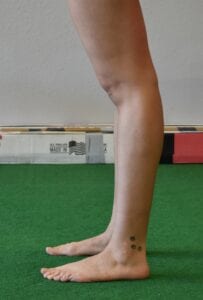What is Ehlers-Danlos Syndrome?
Ehlers-Danlos Syndrome (EDS) is a rare connective tissue disorder inherited from birth. This connective tissue disorder affects the collagen in the body. Each person’s skin, ligaments, tendons, muscles, organs, and blood vessels consist of collagen. When the collagen is affected, it also affects all the systems mentioned above. The ligaments, in particular, are weakened, causing instability in each joint. This instability can increase the likelihood of injury and pain. While there are many different types of Ehlers-Danlos, one of the most significant symptoms that most will identify with is the hypermobility of joints.
Many patients won’t be diagnosed with EDS until later in life due to the rarity of the syndrome. Patients often think that their joints are hypermobile, but it could be much more than that in reality. To be officially diagnosed with Ehlers-Danlos Syndrome, a geneticist must be the one to diagnose a patient with this. Once diagnosed, the patient can then assemble an excellent health care team to help guide them in the right direction to manage this condition.
How do I know if I have Ehlers-Danlos Syndrome?
Many patients may suspect that they have Ehlers-Danlos Syndrome, but only a geneticist can officially confirm and diagnose this condition. Because EDS is an inherited syndrome, only a geneticist and specific tests will be able to diagnose you with this.
Will I have it my entire life?
Yes, this is something that you will have for the rest of your life. Because this is an inherited condition from birth, this will always be something that each patient will manage during their lifetime. Each person’s connective tissue forms while they are in the womb; it is at this time that this disorder forms. While most patients are not diagnosed with this until much later in life, it is something that you have always had if officially diagnosed with EDS.
Does it get worse as I get older?
EDS does not necessarily get worse with age. However, as we get older, our bodies’ ligaments, joints, muscles, connective tissue, etc., begin to break down. When we are children and adolescents, our bodies are continually growing and regenerating these tissues. After about 30, our bodies don’t regenerate these tissues in the same manner anymore. While EDS doesn’t worsen as we age, our bodies also don’t function in the same capacity; therefore, it is essential to address the impairments as soon as possible to manage the pain and symptoms associated with EDS.
Does it affect men or women more?
While women are more affected by EDS, men can also be diagnosed with EDS. If this is something that you are suspecting you have, start with a conversation with your primary care doctor.
Is it genetic? If I have it, will my children have it also?
Yes, this is a genetic disorder. While this is a hereditary genetic disorder, this does not mean that your children will also have EDS. However, knowing that you can give you signs and symptoms to look for in your children as they are growing up. Being proactive with this disorder can be very beneficial. Getting an early official diagnosis will help to set you and or your children on the right path.
What can I do to live with this condition?
This disorder, as mentioned above, will be with you for your lifetime. However, prevention is the key to success. Gathering a healthcare team will be very helpful in addressing the many aspects of EDS. The healthcare team may consist of a primary care physician, pain physician, cardiologist, orthotist, neurosurgeon, gastroenterologist, endocrinologist, pulmonologist, speech, and physical therapist. There are many types of EDS, some affecting more systems of the body than others. Once diagnosed with EDS and subtype, your primary care physician and geneticist can help to formulate a team for you.
How does physical therapy help?
Physical therapy and safe movement are a considerable component of EDS treatment and prevention of injury. Physical therapy can help increase the strength, stabilization, and endurance of each person to prevent future injury. Due to the hypermobility and lack of stability associated with EDS, these patients are more likely to injure themselves during everyday tasks. They will also have a long road to recovery. Finding a physical therapist to work with and learn safe ways to move while also building strength to support your joints will help you become more functional and safe.
Will I get better?
Someone diagnosed with EDS can getter “better” in the sense that they can gain strength, stability, and endurance to prevent future injury. EDS is a hereditary disorder and will always be something that each patient must manage throughout their lifetime. However, their function of everyday life can certainly get better with the right healthcare team and treatment. Schedule a free consultation with a Makovicka Physical Therapy therapist to learn more.

